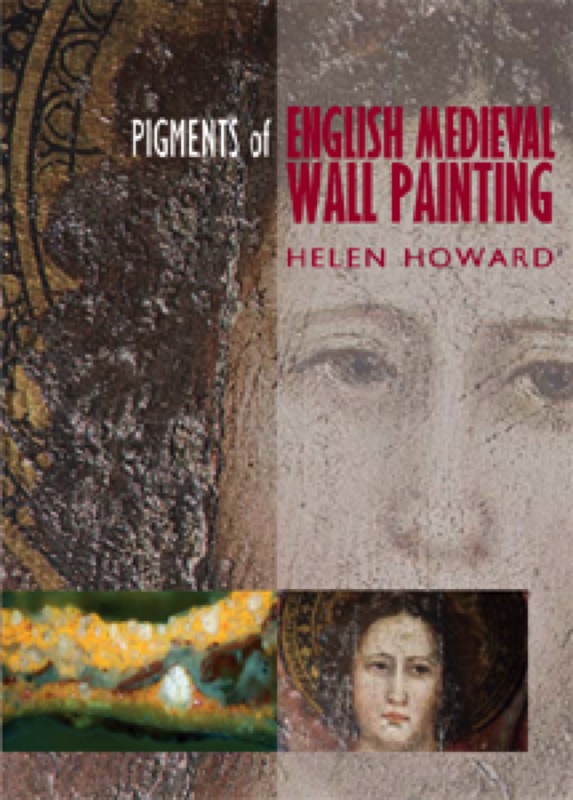In Pigments of English Medieval Wall Painting, Helen Howard demonstrates that the techniques of wall painting in medieval England were far more complex than had previously been supposed.
This is the first systematic analysis of the pigments employed in medieval wall paintings in northern Europe, covering an extensive selection of schemes from a variety of sites including parish churches, cathedrals and abbeys (Canterbury, Westminster, Norwich, Winchester, St Albans, Sherborne and Durham). The nature and extent of the palette used is revealed as well as the sophistication with which pigments were applied to achieve differing effects.
Thirty pigments are detected including four previously unknown in the context of English medieval wall paintings - vivianite, salt green, kermes lake and madder lake. Also discovered are three alterations of pigments: the lightening of red lead; alteration of vivianite to a yellow form and the transformation of verdigris to a blue chloride-based alteration product. The use of different binding media employed for particular pigments in a single paint layer demonstrates the complex manner in which paintings were executed.
The findings, discussed in the context of wall painting, sculptural polychromy and panel painting techniques in medieval northern Europe, show the broad chronological development in the choice, fabrication and application of materials linked to changes in artistic intent, technology and workshop practice. Beautifully illustrated with more than 200 colour plates, Pigments of English Medieval Wall Painting has significant implications for the conservation methods of such paintings and is an important source of information for all those interested in pigments and paintings.
Acknowledgements
List of tables
List of colour plates
Abstract
Introduction
Background to the research
Overview of English medieval wall painting techniques
The focus of this book
Sources of information
Chronological and geographical scope
Initial summary of the results
Methodology
Introduction
Primary sources: medieval treatises, recipe books and accounts
Secondary literature: antiquarian literature and more recent published
sources
The author's work and unpublished analytical sources
Methods of scientific examination employed
Blue pigments
Ultramarine
Vivianite
Egyptian blue
Azurite
Synthetic copper blues
Indigo
Green pigments
Green earth
Salt green
Malachite
Verdigris and copper resinate
Red pigments
Vermilion
Red lake pigments
Red lead
Red and yellow earth pigments
Yellow pigments
Orpiment
Lead-tin yellow
White pigments
Lime white
Chalk
Calcium sulphate whites
Lead white
Bone white
Carbon black pigments
Charcoal black
Bone black
Coal black
Black earth pigments
Discussion
Pigments previously unidentified in English medieval wall painting
Use of pigments and the changing nature of English medieval wall painting
Pigment alteration in English medieval wall painting
Relationships with continental wall painting, polychrome sculpture and panel painting: implications for workshop practice
Conservation implications of the present research
Avenues for further research
Appendix 1: Glossary
Appendix 2: Examination proforma for use in situ
Appendix 3: Tables
Appendix 4: Abbreviations used in the tables
References
Index
Reviews
The book is well produced and the colour plates are of good quality. Helen Howard is to be congratulated on writing this very useful volume, which will prove of great benefit to students as well as a mine of information for conservators, scientists, experienced practitioners of wall-painting conservation and everyone interested in the history of pigments and their use in art.
Studies in Conservation 50 (2005) 77-78
...par sa rigueur, sa clarté et la richesse des sources scientifiques et documentaries réunies, une véritable somme sur les techniques picturales médiévales, désormais indispensable à toute personne approchant une oeuvre peinte et cherchant à en identifier les constituents, et à travers eux, son histoire profonde.
Bulletin Monumental 164(3) (2006) 320-321
